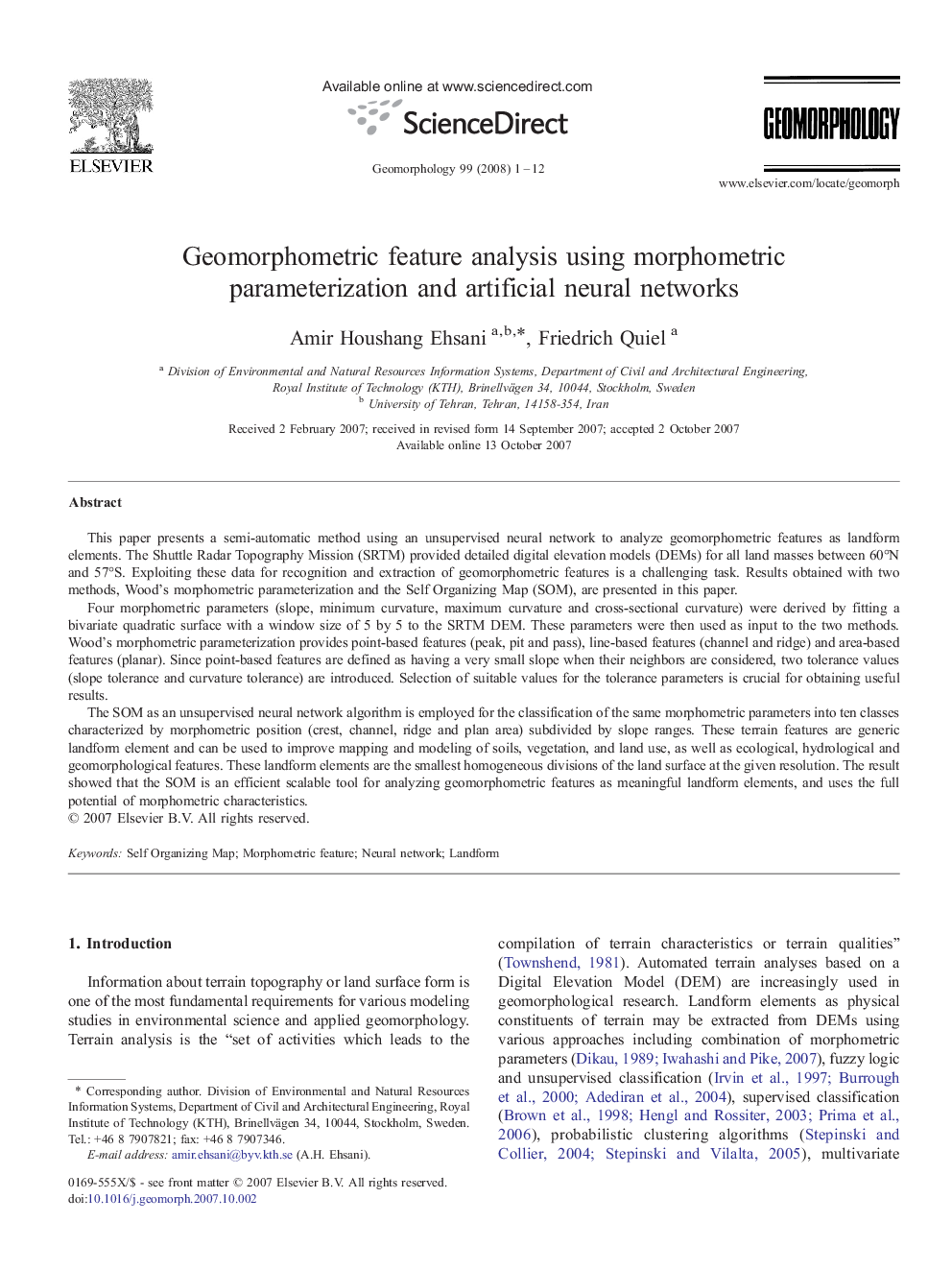| Article ID | Journal | Published Year | Pages | File Type |
|---|---|---|---|---|
| 4687047 | Geomorphology | 2008 | 12 Pages |
This paper presents a semi-automatic method using an unsupervised neural network to analyze geomorphometric features as landform elements. The Shuttle Radar Topography Mission (SRTM) provided detailed digital elevation models (DEMs) for all land masses between 60°N and 57°S. Exploiting these data for recognition and extraction of geomorphometric features is a challenging task. Results obtained with two methods, Wood's morphometric parameterization and the Self Organizing Map (SOM), are presented in this paper.Four morphometric parameters (slope, minimum curvature, maximum curvature and cross-sectional curvature) were derived by fitting a bivariate quadratic surface with a window size of 5 by 5 to the SRTM DEM. These parameters were then used as input to the two methods. Wood's morphometric parameterization provides point-based features (peak, pit and pass), line-based features (channel and ridge) and area-based features (planar). Since point-based features are defined as having a very small slope when their neighbors are considered, two tolerance values (slope tolerance and curvature tolerance) are introduced. Selection of suitable values for the tolerance parameters is crucial for obtaining useful results.The SOM as an unsupervised neural network algorithm is employed for the classification of the same morphometric parameters into ten classes characterized by morphometric position (crest, channel, ridge and plan area) subdivided by slope ranges. These terrain features are generic landform element and can be used to improve mapping and modeling of soils, vegetation, and land use, as well as ecological, hydrological and geomorphological features. These landform elements are the smallest homogeneous divisions of the land surface at the given resolution. The result showed that the SOM is an efficient scalable tool for analyzing geomorphometric features as meaningful landform elements, and uses the full potential of morphometric characteristics.
